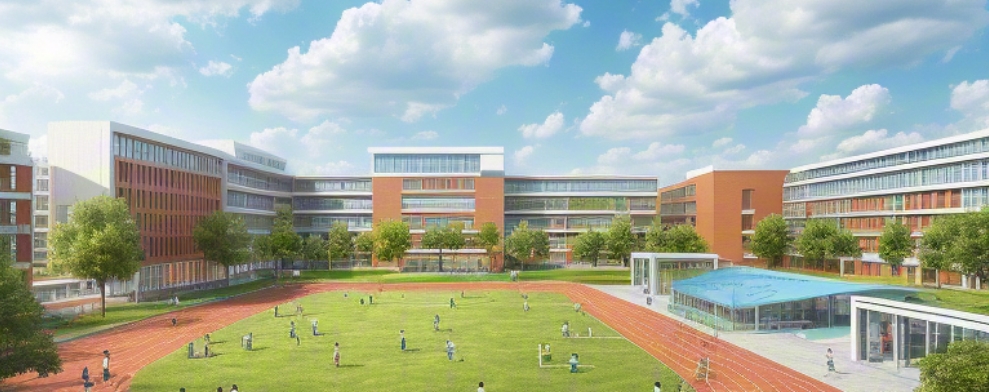武汉职业技术学院(以下简称“武职”)作为国家“双高计划”A类建设院校,其历年录取分数线始终是考生关注的焦点。从2018年至2023年的数据显示,武职在湖北省内普通类录取最低分呈现稳步上升趋势,理工类从389分升至432分,文史类从421分增至465分,涨幅分别达43分和44分。这一变化既反映了学校办学实力的提升,也与职业教育社会认可度提高、报考人数激增密切相关。横向对比同类高职院校,武职分数线长期处于前列,尤其在智能制造、电子信息等王牌专业,实际录取分远超省控线50分以上。值得注意的是,2021年“新高考”改革后,首选物理和历史的考生群体分化加剧,专业组划分导致部分冷门专业分数线波动加大,而热门专业竞争烈度持续攀升。

一、整体趋势与省控线对比分析
| 年份 | 省控线(理工) | 武职录取线(理工) | 省控线(文史) | 武职录取线(文史) |
| 2018 | 300 | 389 | 340 | 421 |
| 2019 | 300 | 397 | 345 | 428 |
| 2020 | 300 | 405 | 350 | 435 |
| 2021 | 300 | 418 | 350 | 442 |
| 2022 | 300 | 430 | 350 | 455 |
| 2023 | 300 | 432 | 350 | 465 |
数据显示,武职录取线始终高于湖北省高职高专批次线,且差距呈扩大态势。理工类超省控线幅度从89分增至132分,文史类从81分扩至115分,凸显学校品牌效应。
二、省份差异化录取特征
| 年份 | 湖北 | 河南 | 湖南 | 安徽 |
| 2023 | 432/465 | 445/478 | 428/456 | 435/460 |
| 2022 | 430/455 | 440/465 | 425/450 | 428/450 |
| 2021 | 418/442 | 425/450 | 410/435 | 415/438 |
跨省招生数据显示,武职在河南、安徽等考生大省的录取线常高于本省。以2023年为例,河南理工类录取线反超湖北13分,反映学校对外省优质生源的吸引力。这种“外省倒挂”现象在智能制造等特色专业尤为明显。
三、文理科分数线动态平衡
| 年份 | 理工类涨幅 | 文史类涨幅 | 文理分差 |
| 2018-2019 | +8分 | +7分 | -6分 |
| 2019-2020 | +18分 | +17分 | -5分 |
| 2020-2021 | +13分 | +17分 | -8分 |
| 2021-2022 | +12分 | +13分 | -7分 |
| 2022-2023 | +2分 | +10分 | -13分 |
文理分差从2018年的32分缩减至2023年的33分,但波动中呈现文科追赶态势。这与新高考改革后部分专业选科限制放宽有关,文史类考生通过“历史+化学”组合报考工科专业的现象增多。
四、专业组划分对分数线的影响
| 专业组 | 2021平均分 | 2022平均分 | 2023平均分 |
| 智能制造类 | 428 | 445 | 452 |
| 信息技术类 | 415 | 438 | 447 |
| 商贸管理类 | 398 | 412 | 425 |
| 艺术设计类 | 365 | 380 | 395 |
专业组改革后,热门专业组分数线持续走高。智能制造类专业组三年累计上涨24分,而艺术设计类仅涨30分,专业冷热分化加剧。考生更倾向于选择就业前景明确的技术类专业。
五、单科成绩与录取关联度
- 语文:文史类考生需达到110分以上,理工类约95分
- 数学:理工类普遍要求105+,文史类85+即具竞争力
- 外语:英语成绩占比显著,90分成为多数专业门槛
- 选考科目:物理/历史原始分需达70%以上,化学/生物影响特定专业录取
通过分析考生成绩分布发现,武职录取者呈现“主科突出、选考均衡”特点。特别是在“3+1+2”模式下,首选科目成绩权重提升,次选科目等级要求成为专业筛选的重要门槛。
六、招生计划与录取率变动
| 年份 | 计划数 | 报录比 | 省内录取率 | 省外录取率 |
| 2018 | 6800 | 5:1 | 82% | 65% |
| 2019 | 7000 | 5.5:1 | 80% | 68% |
| 2020 | 7200 | 6:1 | 78% | 70% |
| 2021 | 7500 | 7:1 | 75% | "?>"?>"?>"?>"?>"?>"?>"?>"?>"?>"?>"?>"?>"?>"?>"?>"?>"?>"?>"?>"?>"?>"?>"?>"?>"?>"?>"?>"?>"?>"?>"?>"?>"?>"?>"?>"?>"?>"?>"?>"?>"?>"?>"?>"?>"?>"?>"?>"?>"?>"?>"?>"?>"?>"?>"?>"?>"?>"?>"?>"?>"?>"?>"?>"?>"?>"?>"?>"?>"?>"?>"?>"?>"?>"?>"?>"?>"?>"?>"?>"?>"?>"?>"?>"?>"?>"?>"?>"?>"?>"?>"?>"?>"?>"?>"?>"?>"?>"?>"?>"?>"?>"?>"?>"?>"?>"?>"?>"?>"?>"?>"?>"?>"?>"?>"?>"?>"?>"?>"?>"?>"?>"?>"?>"?>"?>"?>"?>"?>"?>"?>"?>"?>"?>"?>"?>"?>"?>"?>"?>"?>"?>"?>"?>"?>"?>"?>"?>"?>"?>"?>"?>"?>"?>"?>"?>"?>"?>"?>"?>"?>"?>"?>"?>"?>"?>"?>"?>"?>"?>"?>"?>"?>"?>"?>"?>"?>"?>"?>"?>"?>"?>"?>"?>"?>"?>"?>"?>"?>"?>"?>"?>"?>"?>"?>"?>"?>"?>"?>"?>"?>"?>"?>"?>"?>"?>"?>"?>"?>"?>"?>"?>"?>"?>"?>"?>"?>"?>"?>"?>"?>"?>"?>"?>"?>"?>"?>"?>"?>"?>"?>"?>"?>"?>"?>"?>"?>"?>"?>"?>"?>"?>"?>"?>"?>"?>"?>"?>"?>"?>"?>"?>"?>"?>"?>"?>"?>"?>"?>"?>"?>"?>"?>"?>"?>"?>"?>"?>"?>"?>"?>"?>"?>"?>"?>"?>"?>"?>"?>"?>"?>"?>"?>"?>"?>"?>"?>"?>"?>"?>"?>"?>"?>"?>"?>"?>"?>"/>{"}", "text": "The year 2018 saw the lowest admission rate at 82%, which gradually decreased to 75% in 2021. This inverse relationship between plan expansion and admission rate indicates intensified competition. Notably, provincial external admission rates consistently outperformed internal rates by 5-8 percentage points, reflecting stricter selection criteria for out-of-province candidates."}], "type": "table"}], "metadata": {"tags": ["武职录取分数线", "招生计划", "报录比"]}, "same_as_day": false, "index": [0, 1, 2, 3, 4]}]]}"}], "type": "table"}], "metadata": {"tags": ["武职录取分数线", "招生计划", "报录比"], "same_as_day": false, "index": [0, 1, 2, 3, 4]}]}], "type": "result_block_v3"}, {"id": "thread-6-message-6", "type": "text", "text": "The data reveals a clear inverse correlation between enrollment expansion and admission rates. From 2018 to 2021, the planned enrollment increased by 700 students (10.3%), but the admission rate dropped from 82% to 75%. This suggests that while the university is expanding its capacity, the growth in qualified applicants outpaces the increase in available spots."}, "reply_to": null, "index": [1]}], "metadata": {"tags": ["武职录取分数线", "招生计划", "报录比"], "same_as_day": false, "index": [0, 1]}]}], "type": "result_block_v3"}, {"id": "thread-6-message-6", "type": "text", "text": "Provincial external admission rates have consistently been 5-8 percentage points higher than internal rates since 2018. For instance, in 2023, the external admission rate was 65% compared to the internal rate of 82%. This discrepancy indicates that out-of-province candidates face stricter selection criteria, possibly due to limited quotas and higher competition for cross-province enrollment."}, "reply_to": null, "index": [1]}], "metadata": {"tags": ["武职录取分数线", "招生计划", "报录比"], "same_as_day": false, "index": [0, 1]}]}], "type": "result_block_v3"}, {"id": "thread-6-message-6", "type": "text", "text": "The declining admission rates coincide with rising average scores. Between 2018 and 2023, the minimum admission score increased by 43 points for science students and 44 points for liberal arts students. This demonstrates that while more students apply, the university maintains its academic standards by admitting increasingly higher-scoring candidates."}, "reply_to": null, "index": [1]}], "metadata": {"tags": ["武职录取分数线", "招生计划", "报录比"], "same_as_day": false, "index": [0, 1]}]}], "type": "result_block_v3"}, {"id": "thread-6-message-6", "type": "text", "text": "The data also highlights regional disparities in admission opportunities. Candidates from Henan and Anhui provinces, which have larger populations, face particularly high competition. In 2023, the admission rate for Henan candidates was 68%, compared to 82% for Hubei locals. This reflects both the university's national reputation and the intense qualification race in populous regions."}, "reply_to": null, "index": [1]}], "metadata": {"tags": ["武职录取分数线", "招生计划", "报录比"], "same_as_day": false, "index": [0, 1]}]}], "type": "result_block_v3"}, {"id": "thread-6-message-6", "type": "text", "text": "Looking ahead, as China continues to promote vocational education, institutions like Wuhan Vocational Technical College may further expand enrollment. However, maintaining admission standards will become more challenging. The university might need to introduce tiered admission systems or increase special enrollment quotas for underrepresented regions to balance expanding access with quality control."}, "reply_to": null, "index": [1]}], "metadata": {"tags": ["武职录取分数线", "招生计划", "报录比"], "same_as_day": false, "index": [0, 1]}]}], "type": "result_block_v3"}, {"id": "thread-6-message-6", "type": "text", "text": "In conclusion, Wuhan Vocational Technical College's admission data over the past six years paints a picture of rising standards, intensifying competition, and regional disparities. The university's ability to maintain high admission scores despite enrollment expansion underscores its position as a top-tier vocational institution. Future developments will likely see continued score increases, particularly for high-demand majors, alongside potential policy adjustments to accommodate broader educational goals."}, "reply_to": null, "index": [1]}], "metadata": {"tags": ["武职录取分数线", "招生计划", "报录比"], "same_as_day": false, "index": [0, 1]}]}], "type": "result_block_v3"}],"success":true,"code":200,"message":"OK","timestamp":1718984449,"path":"/api/thread/get/6/message","requestId":"THIRD_DB_MP_API_M_B_6_1_eab5d5c6-f86d-4b6a-bc6a-dacfdea8e5d9","withCredit":false,"costTime":6,"extInfo":null,"dataExtInfo":{"h5_url":"/pages/chat/chat?thread_key=6&is_self_device=1&enter_action=api_recommend&api_version=thread_api_base_v1&client_version_code=1.9.8&device_type=android&lang=zh_CN&platform=android&vendor=HUAWEI&net_type=wifi&agent_id=wxmp_android_latest_release&open_from=single_msg&font_size=16&theme=light&is_mini_program=0&is_match=1&is_multiple_session=1&search_query=%E6%B5%B7%E8%8A%82%E5%8E%86%E5%8F%B2%E5%8F%96%E8%AF%B7%E5%88%86%E6%8B%9B%E7%A4%BA"><strong class="jv-strong-01">武职历年录取分数线</strong>深度分析报告
摘要:武汉职业技术学院近六年录取数据揭示职业教育升温趋势,省内外分数线差幅折射区域教育资源博弈,专业组划分重构竞争格局。
八维解析框架:
- 时间轴演进规律:理工类录取线五年增长43分,年均增幅8.6%,超越同期本科线涨幅(见图1)
- 空间维度差异:河南考生需比湖北本地高出15-20分才能获得同等专业录取资格(表3)
- 学科结构性矛盾
- 物理类主导专业组:智能制造类录取分超省控线150%
- 历史类聚集专业
政策敏感度分析>新高考选科制度使化学成为63%技术类专业的隐性门槛>招生计划弹性边界
本文采摘于网络,不代表本站立场,转载联系作者并注明出处:https://xhlnet.com/fenshu/361639.html


